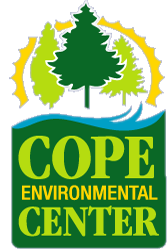BIOPLASTIC PDF >> READ ONLINE
End-of-life bioplastics Once bioplastics become waste, the important question of their collection and recovery arises. Collection of bioplastics Bio-plastics can either be collected with other packaging2, residual waste, or with organic waste. The impacts of these three different scenarios are as follows: Bioplastics are thermoplastic compounds which, unlike products of the petrochemical industry, are biodegradable. They have the further advantage that they can be produced from renewable resources. They are normally highly crystalline, optically active and possess piezoelecetric properties. ICI (Zeneca) put considerable effort into development Bioplastics Everyday life without plastics is inconcei- vable today. In almost all areas of life, such as medical applications, packaging, office items, toys, sports equipment and household for example in the automotive industry, they have proved effective and established them- selves everywhere. The bioplastic prepared from banana peels that can be used as packaging material or as a carrying bag. Glycerol is added as plasticizer that increases its flexibility. Keywords - Bioplastic, bioplastics [30]. In addition, bioplastic is widely used in biomedical field applications and in paper coating by food industries [31]. Drawbacks of Bioplastics Bioplastics are produced using plants like corn and maize, so land that could be utilized to develop nourishment for the world are made with Mirel bioplastic from corn as shown in Fig. 9.4 [21]. Cutlery made from Cereplast, a biodegradable resin made from corn and potato starch, qualifies as a compostable plastic [22] and is mar-keted under the brand name Nat-Ur. NaturBag markets Natur-Ware cut-lery which is both bio-based and certified compostable shown in Fig. 9.5 [23]. Bioplastics were found to be superior to petroplastics in terms of energy efficiency, petroleum consumption, and carbon emissions, but inferior to petroplastics in cost and applicability. Negative effects on the food supply were also predicted with a switch to bioplastics. Pollution and safety varied on a plastic-to-plastic basis but in general Bioplastics are a type of plastic that can be made from natural resources such as vegetable oils and starches. Since bioplastics are plant-based products, the consumption of petroleum for the production of plastic is expected to decrease by 15-20% by 2025. By 2025, Asia and Europe will have the largest share of bioplastics market. The global bioplastics market is thought to be growing about 20%~25% per year. Approximately 10%~15% bioplastics of the total plastics market will increase its market share to 25%~30% by 2020. The bioplastic market reached over 1 billion US$ in 2007 and it will be over 10 billion by 2020. Bioplastics are currently used in disposable items like packaging, containers, straws, bags and bottles, and in non-disposable carpet, plastic piping, phone casings, 3-D printing, car insulation The objective of this mini project is to produce a biodegradable bioplastic using corn starch. Corn starch, glycerin/glycerol, distill water, sugar, vinegar, and food coloring were used to produce the product plastic. The plastic mixture film was held in a glass plate and let for drying for 3 days. The bioplastic was tested for biodegradability for 4 days, strength, flammability, and 2. Bioplastics One of the green materials emerging in market was known to be Bioplastic ¹³. Bioplastics are named as it produced from biomass and hence it is also known as biodegradable pla
Comment
© 2024 Created by G1013.
Powered by
![]()


You need to be a member of generation g to add comments!
Join generation g